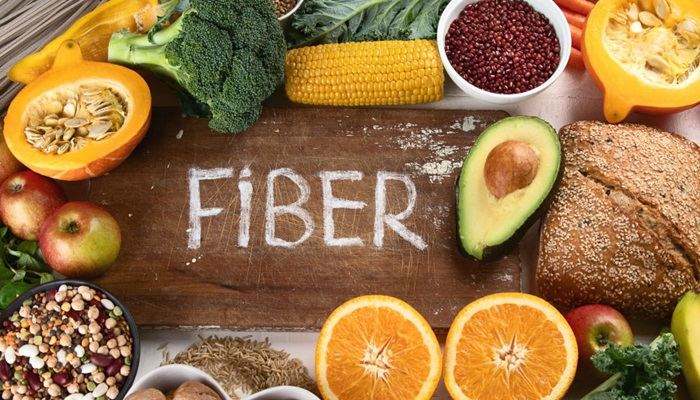Fiber, often overlooked, plays a crucial role in maintaining a healthy diet. This article delves into the importance of fiber, exploring its benefits, preparation methods, and cultural significance. By understanding the role of fiber, we can make more informed choices about our food, leading to better health outcomes.
Introduction to Fiber
Introduction to Fiber: Fiber is a type of carbohydrate that the body cannot fully digest. It comes in two forms: soluble and insoluble. Soluble fiber dissolves in water to form a gel-like substance, while insoluble fiber adds bulk to the stool and helps food pass through the digestive system. Including both types of fiber in your diet supports overall digestive health and offers numerous benefits.
Benefits of Fiber in a Healthy Diet
Benefits of Fiber in a Healthy Diet: Consuming enough fiber can lead to improved health in several ways:
Promotes Digestive Health: Fiber aids in regular bowel movements, preventing constipation and promoting gut health.
Supports Heart Health: Soluble fiber can help lower cholesterol levels by binding with fats in the digestive tract, reducing their absorption into the bloodstream.
Aids Weight Management: High-fiber foods are often more filling, which can reduce overeating and support weight loss efforts.
Stabilizes Blood Sugar Levels: Fiber slows down the absorption of sugar, helping to maintain steady blood glucose levels and reduce the risk of type 2 diabetes.
Enhances Gut Microbiome: Fiber acts as a prebiotic, feeding beneficial bacteria in the gut, which contributes to a healthy microbiome.
Each benefit highlights the critical role that fiber plays in supporting various aspects of health, making it an essential component of a balanced diet.
Essential Ingredients for a High-Fiber Diet
Essential Ingredients for a High-Fiber Diet: To create a high-fiber meal, consider incorporating these ingredients:
- Whole grains (such as oats, barley, quinoa)
- Legumes (beans, lentils, peas)
- Vegetables (broccoli, carrots, spinach)
- Fruits (apples, berries, oranges)
- Nuts and seeds (almonds, chia seeds, flaxseeds)
Each ingredient brings different types of fiber to the table. Whole grains provide insoluble fiber, legumes offer both soluble and insoluble fiber, vegetables add variety and nutrients, fruits contribute soluble fiber and natural sweetness, and nuts and seeds bring healthy fats along with fiber.
Preparing High-Fiber Meals
Preparing High-Fiber Meals: Cooking high-fiber meals doesn’t have to be complicated. Here are some simple recipes that highlight the ingredients mentioned:
Quinoa Salad with Black Beans: Quinoa salad is a quick and easy dish packed with fiber. Ingredients needed:
- 1 cup quinoa
- 2 cups water
- 1 can black beans, drained and rinsed
- 1 cucumber, diced
- 1 bell pepper, diced
- 1 cup cherry tomatoes, halved
- 1/4 cup fresh cilantro, chopped
- 1/4 cup olive oil
- Juice of 1 lime
- Salt and pepper to taste
Rinse the quinoa under cold water. In a saucepan, combine the quinoa and water, bring to a boil, then simmer until the water is absorbed. Let it cool. Mix the cooled quinoa with the black beans, diced vegetables, cilantro, olive oil, lime juice, and seasonings. Toss everything together and serve chilled.
Lentil Soup: Lentil soup is a hearty option that provides plenty of fiber. Ingredients required:
- 1 cup dried lentils, rinsed
- 1 onion, chopped
- 2 carrots, sliced
- 2 celery stalks, sliced
- 4 cups vegetable broth
- 1 can diced tomatoes
- 2 cloves garlic, minced
- 1 teaspoon ground cumin
- Salt and pepper to taste
In a large pot, sauté the onion, carrots, and celery until softened. Add the garlic and cook for another minute. Stir in the lentils, vegetable broth, diced tomatoes, cumin, salt, and pepper. Bring to a boil, then reduce heat and simmer until the lentils are tender. Serve hot with crusty bread.
Berry Smoothie Bowl: Berry smoothie bowls are a delicious way to start the day with fiber. Ingredients needed:
- 1 cup mixed berries (fresh or frozen)
- 1 banana, sliced
- 1/2 cup Greek yogurt
- 1/4 cup rolled oats
- Optional toppings (chia seeds, granola, honey)
Blend the berries and banana until smooth. Pour the mixture into a bowl and top with Greek yogurt, rolled oats, and optional toppings. Enjoy this refreshing and nutritious breakfast.
Cultural Significance of Fiber-Rich Foods
Cultural Significance of Fiber-Rich Foods: Fiber-rich foods hold deep cultural roots, reflecting the traditions and values of different societies. In many cultures, whole grains and legumes have been staples for centuries, providing sustenance and promoting health. For example, in Indian cuisine, dishes like dal (lentil stew) and roti (whole wheat flatbread) are central to daily meals. African diets often include a variety of leafy greens and tubers, which are rich in fiber and support digestive health. By embracing fiber-rich eating habits, we honor these traditions and celebrate the diversity of global flavors.
Conclusion
In conclusion, fiber is an indispensable part of a healthy diet, offering numerous benefits that enhance overall well-being. From promoting digestive health and supporting heart health to aiding weight management and stabilizing blood sugar levels, the advantages of consuming fiber are clear. Incorporating essential ingredients into your meals ensures you receive a broad spectrum of fiber necessary for optimal health. Preparing high-fiber dishes can be simple and enjoyable, offering delicious ways to nourish your body. Culturally, fiber-rich foods connect us to heritage and community, enriching our lives through shared culinary experiences. Embracing a fiber-rich diet is an investment in your well-being, paving the way for a healthier, happier future.
Related topics:


